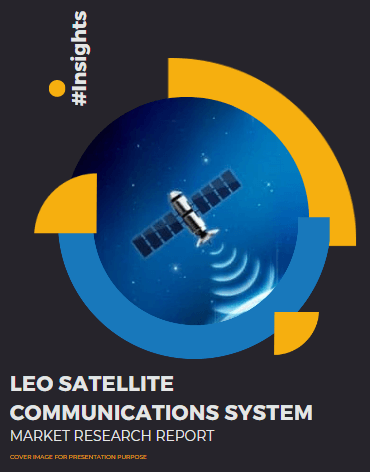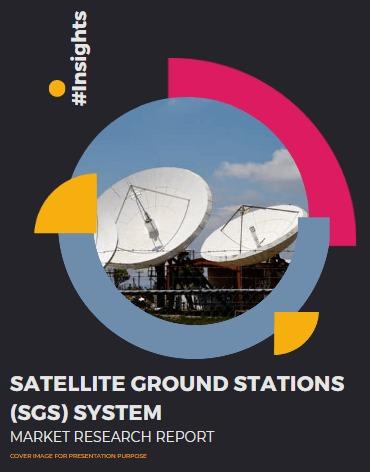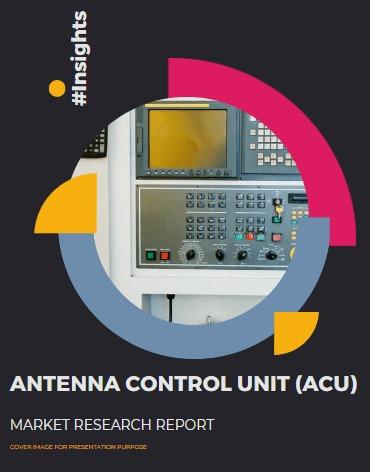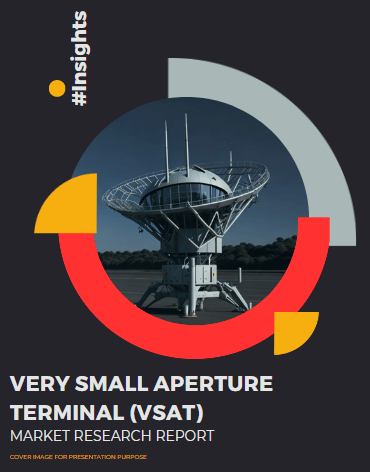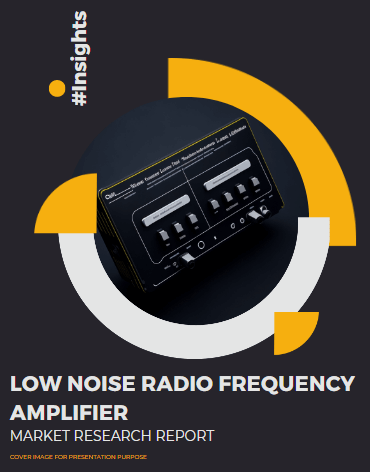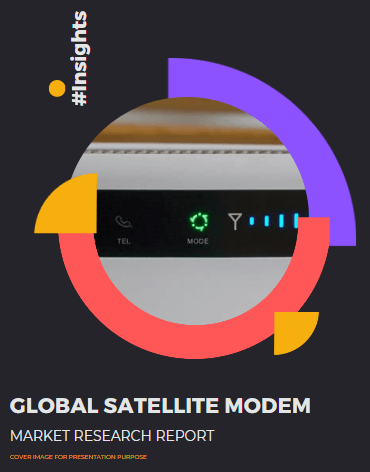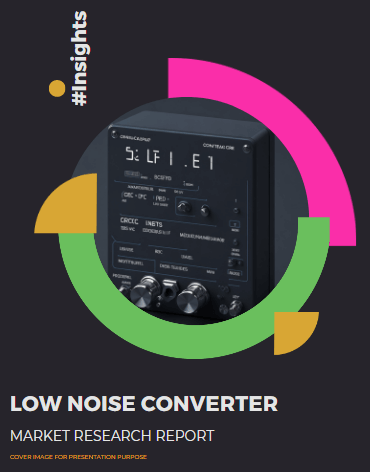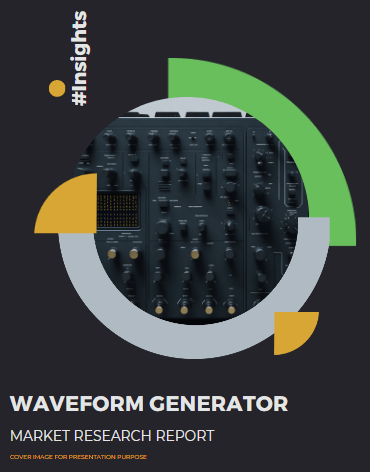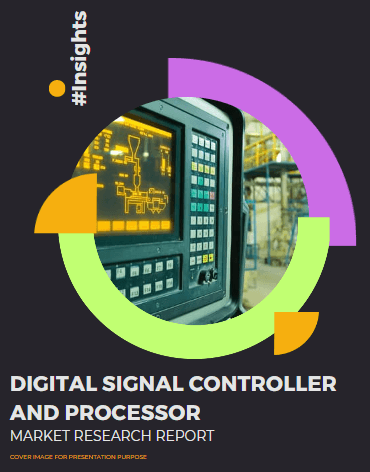LEO Satellites: A Game-Changer for the Industrial Sector
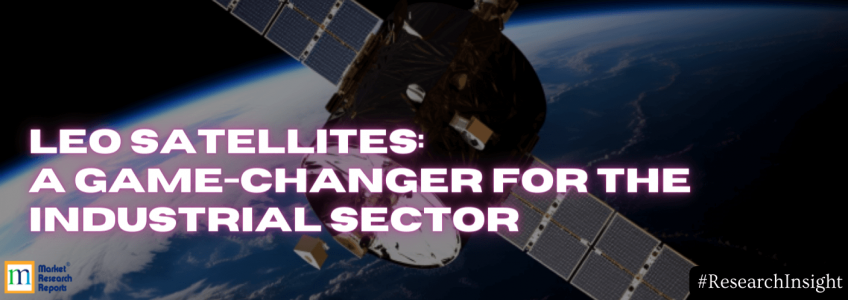
Table of Contents
- LEO Satellites: An Overview
- Low Earth Orbit (LEO) Satellite Communications System Market
- Industrial Applications of LEO Satellites
- Demand and Opportunities for LEO Satellites in the Industrial Sector
- Challenges Facing the Adoption of LEO Satellites in the Industrial Sector
- Examples of Successful LEO Satellite Deployments
- Related Reports
Low Earth orbit (LEO) satellites are becoming increasingly popular in the industrial sector, with their ability to provide high-speed data connectivity, real-time imaging, and global positioning capabilities. From agriculture to logistics, and from telecommunications to environmental monitoring, LEO satellites are being deployed in various industries for a wide range of applications.
In this blog, we will discuss the demand for LEO satellites in the industrial sector, the opportunities they present, and the challenges that need to be overcome to fully exploit their potential.
1 . LEO Satellites: An Overview
LEO satellites are a type of satellite that orbits the Earth at an altitude between 160 and 2,000 kilometers. They are closer to the Earth's surface than other types of satellites, such as geostationary satellites, which orbit at an altitude of 36,000 kilometers. This proximity allows LEO satellites to provide high-speed data connectivity with low latency and enables them to capture real-time images of the Earth's surface.
The demand for LEO satellites in the industrial sector is driven by their ability to provide real-time data and connectivity to remote areas. This is particularly important in industries such as agriculture, logistics, and mining, where remote locations can be challenging to access and require reliable communication infrastructure. LEO satellites can provide these industries with a reliable, high-speed, and low-latency data connection, allowing them to operate more efficiently and with greater precision.
2 . Low Earth Orbit (LEO) Satellite Communications System Market
The satellite communications service market is projected to experience significant growth over the next decade, with an estimated value of USD ~40 to 45 billion by 2030. The market is still in its early stages, making it challenging to predict its precise growth and size, but there is potential for even more rapid expansion. LEO technology is expected to be the primary driver of growth, accounting for more than 40% of the market by 2030 due to its superior service quality and extended coverage in areas where terrestrial connectivity infrastructure is limited.
LEO Satellite Communications System Market Market Research Report
3 . Industrial Applications of LEO Satellites
Agriculture:
LEO satellites can be used in agriculture to monitor crop health, predict crop yield, and optimize irrigation. By capturing real-time images of crops, farmers can detect signs of stress, such as water or nutrient deficiency, and take corrective action before the damage becomes irreversible. Additionally, LEO satellites can provide data on weather patterns, soil moisture, and other environmental factors that affect crop growth, enabling farmers to make informed decisions about when to plant, irrigate, or harvest their crops. Here are some key ways in which LEO satellites are being applied in agriculture:
Crop Monitoring: LEO satellites can provide high-resolution images of crop fields, allowing farmers to monitor crop health, growth, and development over time. This data can be used to identify areas of the field that may require additional attention, such as increased watering or fertilization, or to track the spread of disease or pests.
Weather Monitoring: Weather patterns and environmental factors can significantly impact crop yields. LEO satellites can provide real-time data on weather conditions, including temperature, humidity, and precipitation, allowing farmers to make informed decisions about when to plant, water, or harvest crops.
Soil Analysis: Soil quality is a critical factor in crop growth and yield. LEO satellites can provide data on soil moisture, pH levels, and nutrient content, enabling farmers to make informed decisions about fertilizer application and irrigation.
Yield Estimation: Accurately estimating crop yield is important for managing supply and demand, and for forecasting market trends. LEO satellites can provide data on crop growth and development over time, allowing farmers to estimate yield and adjust production accordingly.
Precision Agriculture: LEO satellite technology can be combined with other technologies, such as unmanned aerial vehicles (UAVs) and global positioning systems (GPS), to create precision agriculture systems. These systems allow farmers to collect and analyze data on crop growth and development, weather conditions, and soil quality, and use this information to optimize crop management practices.
Environmental Monitoring: Agriculture can have a significant impact on the environment, including water quality, soil erosion, and greenhouse gas emissions. LEO satellites can provide data on these factors, allowing farmers to make more sustainable choices and reduce their environmental impact.
Logistics:
Low Earth orbit (LEO) satellites are rapidly transforming the logistics industry by enabling businesses to track assets and optimize supply chains with unprecedented precision. With the increasing need for real-time monitoring and visibility in logistics operations, LEO satellites are emerging as a key enabler for businesses seeking to gain a competitive advantage.
- Asset tracking: By attaching small, low-power devices to assets such as vehicles, containers, and packages, businesses can track the location and condition of their assets in real time. This enables businesses to optimize their supply chains, reduce theft and loss, and improve delivery times.
- Monitoring: Monitoring the condition of perishable goods during transportation. By measuring temperature, humidity, and other environmental factors, businesses can ensure that goods are being transported under the proper conditions and take corrective action if necessary. This is particularly important for industries such as food and pharmaceuticals, where product quality and safety are critical.
- Route optimization: By analyzing real-time data on traffic, weather, and other factors, businesses can optimize their transportation routes to reduce fuel costs, improve delivery times, and minimize environmental impact. This can also help businesses avoid congestion and other delays that can lead to lost productivity and revenue.
- Mritime logistics: In mritime logistics they are being used for vessel tracking, weather monitoring, and other applications. By providing real-time data on vessel location, speed, and course, businesses can improve supply chain visibility and reduce the risk of lost or delayed shipments. Additionally, LEO satellites can be used to monitor ocean conditions, including sea surface temperature, wave height, and currents, which can help businesses optimize shipping routes and avoid hazardous weather conditions.
Mining:
Low Earth orbit satellites have numerous potential applications in the mining industry. With their ability to provide real-time data and high-resolution imaging, LEO satellites offer several advantages over traditional satellite technology.
- One of the most significant benefits of LEO satellites is their ability to provide near-real-time monitoring of mining operations. By capturing high-resolution images of mining sites on a regular basis, LEO satellites can help operators identify potential safety hazards, track equipment usage, and monitor the progress of mining activities. This can help improve efficiency and safety while reducing costs.
- LEO satellites can also be used for remote sensing and geospatial analysis, enabling mining operators to identify potential mineral deposits and assess the feasibility of new mining projects. This data can be used to create 3D models of mining sites, enabling operators to better understand the topography and geology of an area and plan mining activities accordingly.
- Another potential application of LEO satellites in the mining industry is for environmental monitoring and compliance. With their ability to capture high-resolution images of mining sites and surrounding areas, LEO satellites can be used to monitor air and water quality, track changes in land use, and identify potential environmental impacts of mining activities. This information can be used to ensure compliance with environmental regulations and improve sustainability in mining operations.
- LEO satellites can also be used for asset tracking and logistics in the mining industry. By tracking the location and usage of mining equipment and vehicles, operators can optimize their operations and reduce downtime. This data can also be used to improve supply chain management and reduce transportation costs.
Telecommunications:
LEO satellites can be used in telecommunications to provide high-speed data connectivity to remote areas, such as rural communities or developing countries. By providing a reliable data connection, LEO satellites can enable these communities to access online education, telemedicine, and other essential services.
Here are some of the key applications of LEO satellites in telecommunications:
Broadband Connectivity: One of the most promising applications of LEO satellites is to provide broadband internet access to remote and rural areas. Traditional terrestrial networks are often not economically viable in these areas due to the high cost of infrastructure deployment and maintenance. LEO satellites, on the other hand, can provide high-speed internet access to these areas without the need for extensive ground-based infrastructure.
Mobile Networks: LEO satellites can also be used to provide connectivity to mobile networks, particularly in areas where traditional cellular towers are not available or are unable to provide adequate coverage. This can include areas with difficult terrain, such as mountainous regions or deep valleys, as well as areas with low population density.
Disaster Response: LEO satellites can also be used to provide critical communications during emergency situations, such as natural disasters or terrorist attacks. In these situations, traditional terrestrial networks may be damaged or overloaded, making it difficult for first responders and other emergency personnel to communicate. LEO satellites can provide a reliable backup communications network, allowing emergency responders to coordinate their efforts more effectively.
IoT Applications: The Internet of Things (IoT) is rapidly expanding, with more and more devices becoming connected to the internet. LEO satellites can play an important role in supporting these devices, particularly in remote or rural areas where traditional connectivity options are limited. This can include applications such as smart agriculture, environmental monitoring, and asset tracking.
Global Connectivity: LEO satellites can provide global connectivity, allowing businesses and individuals to stay connected even when they are traveling to remote or inaccessible locations. This can include applications such as aviation and maritime communications, as well as remote scientific research.
Environmental Monitoring:
LEO satellites can be used in environmental monitoring to track weather patterns, monitor climate change, and detect natural disasters. By capturing real-time images of the Earth's surface, LEO satellites can provide data on changes in land use, deforestation, and other environmental factors that affect the planet's health.
Natural Disaster Monitoring: One of the most important applications of LEO satellites in environmental monitoring is the tracking of natural disasters such as hurricanes, wildfires, and floods. LEO satellites can capture high-resolution images of these events in near-real time, allowing emergency responders to quickly assess the extent of the damage and coordinate relief efforts. For example, during the 2017 Hurricane Harvey in Texas, LEO satellite data was used to monitor floodwaters, identify potential hazards, and coordinate search and rescue efforts.
Climate Change Tracking: LEO satellites are also being used to monitor the effects of climate change on the Earth's surface. By capturing data on sea level rise, glacier melt, and other indicators of climate change, scientists can better understand the impacts of global warming and develop strategies for mitigating its effects. For example, NASA's GRACE-FO mission uses twin satellites to monitor changes in Earth's gravity field, providing valuable data on changes in water distribution and other indicators of climate change.
Land Use and Vegetation Monitoring: LEO satellites are also being used to track changes in land use and vegetation cover, providing valuable data for agriculture, forestry, and conservation efforts. By analyzing satellite imagery, scientists can track changes in crop yields, monitor deforestation, and assess the health of ecosystems. For example, the European Space Agency's Sentinel-2 mission provides high-resolution imagery of the Earth's surface, which is used to monitor land use changes and vegetation cover in near-real time.
Air Quality Monitoring: LEO satellites are also being used to monitor air quality, providing valuable data for environmental and public health efforts. By capturing data on pollutants such as nitrogen dioxide and particulate matter, LEO satellites can help identify sources of air pollution and develop strategies for reducing emissions. For example, the European Space Agency's Sentinel-5P mission provides data on a range of air pollutants, including ozone, nitrogen dioxide, and sulfur dioxide.
Ocean Monitoring: LEO satellites are also being used to monitor the world's oceans, providing valuable data on everything from sea surface temperature to ocean currents and wave heights. By tracking changes in ocean conditions, scientists can better understand the impacts of climate change on marine ecosystems and develop strategies for mitigating its effects. For example, NASA's Ocean Surface Topography Mission (OSTM)/Jason-2 mission provides data on ocean currents and sea level rise, which is used to track changes in ocean circulation patterns and predict the impacts of climate change on the world's oceans.
4 . Demand and Opportunities for LEO Satellites in the Industrial Sector
The demand for LEO satellites in the industrial sector is driven by their ability to provide real-time data and connectivity to remote areas. This demand is expected to continue growing in the coming years as more industries recognize the benefits of LEO satellites and as new applications for LEO satellites are developed.
Development of Smart Cities
As cities become more connected and rely on data to optimize their operations, LEO satellites can provide a critical component of this infrastructure by providing high-speed data connectivity and real-time imaging capabilities. For example, LEO satellites can be used to monitor traffic patterns, detect potholes or other road hazards, and optimize energy consumption in buildings.
Here are some ways in which LEO satellites can contribute:
Infrastructure Monitoring: LEO satellites can monitor infrastructure such as roads, bridges, and buildings for signs of wear and tear or damage. This information can be used to identify maintenance needs and prioritize repairs, reducing the risk of accidents and improving safety.
Energy Management: LEO satellites can monitor energy consumption in buildings and neighborhoods, providing insights into where energy is being wasted and where efficiency can be improved. This information can be used to optimize energy usage, reduce costs, and minimize the carbon footprint of cities.
Disaster Response: LEO satellites can be used to monitor natural disasters such as hurricanes, floods, and wildfires, providing real-time information that can help emergency responders plan and execute rescue operations.
Traffic Management: LEO satellites can monitor traffic patterns and congestion, enabling cities to optimize traffic flow and reduce travel times. This can improve the efficiency of public transportation systems and reduce carbon emissions.
Public Safety: LEO satellites can be used to monitor public spaces for signs of criminal activity, enabling law enforcement agencies to respond quickly to potential threats.
Deployment of the Internet of Things (IoT)
As more devices become connected to the internet, there will be an increasing need for high-speed data connectivity and real-time data processing capabilities. LEO satellites can provide this infrastructure, enabling IoT devices to operate in remote areas where traditional communication infrastructure may not be available.
LEO satellites can enable low-power connectivity solutions, such as narrowband IoT (NB-IoT), which are ideal for applications that require low data rates and long battery life.
One of the most significant advantages of LEO satellites for IoT deployments is their ability to provide coverage in remote and underserved areas. In many parts of the world, traditional terrestrial connectivity solutions are not available, making it difficult to deploy IoT networks. LEO satellites can provide a cost-effective and reliable solution for connecting these areas, enabling businesses to access new markets and improve their operations.
Several companies are already exploring the use of LEO satellites for IoT deployments. For example, Hiber is a Dutch company that operates a fleet of LEO satellites for IoT connectivity. Hiber's satellites provide low-cost and low-power connectivity for a range of applications, including environmental monitoring, precision agriculture, and logistics. Another example is Swarm Technologies, a California-based company that operates a fleet of small LEO satellites for IoT connectivity. Swarm's satellites provide global coverage for IoT devices, enabling businesses to deploy their devices anywhere in the world.
Development of new Technologies and Services
LEO satellites become more widely adopted, there will be a need for new ground-based infrastructure to support their operations, such as ground stations and data centers. Additionally, the data collected by LEO satellites can be used to develop new analytical tools and predictive models, enabling businesses to make better-informed decisions.
5 . Challenges Facing the Adoption of LEO Satellites in the Industrial Sector
Despite the significant opportunities presented by LEO satellites, there are several challenges that need to be overcome to fully exploit their potential.
Cost of deployment
Deploying and maintaining LEO satellites is expensive, and the infrastructure required to support their operations, such as ground stations and data centers, can also be costly. This can be a barrier to entry for small and medium-sized businesses that may not have the resources to invest in this infrastructure.
Here are some of the factors that contribute to the high cost of LEO satellite deployment:
Launch Costs: The cost of launching a single satellite into LEO can range from tens of millions to hundreds of millions of dollars, depending on the launch vehicle and other factors. To deploy a full constellation of LEO satellites, businesses must invest significant resources in launch services, which can be a major expense.
Satellite Design and Manufacturing: LEO satellites must be designed and manufactured to withstand the harsh environment of space, including extreme temperatures, radiation, and microgravity. The cost of developing and building a satellite that meets these requirements can be significant, particularly for small businesses and startups.
Ground Infrastructure: In addition to the satellites themselves, LEO constellations require significant ground infrastructure to support communication, data processing, and other functions. This includes ground stations, data centers, and other equipment, which can add to the overall cost of deployment.
Maintenance and Upgrades: Once a LEO constellation is deployed, businesses must invest in ongoing maintenance and upgrades to ensure that the satellites remain operational and effective. This can include regular software updates, repairs and replacements for damaged hardware, and other maintenance activities, which can add to the overall cost of ownership.
Regulatory compliance
LEO satellites operate in a crowded and highly regulated space environment, and businesses deploying these satellites must comply with a range of regulations and standards.
One of the main regulatory challenges facing LEO satellite operators is the need to obtain regulatory approvals from multiple jurisdictions. As LEO satellites orbit the Earth at low altitudes, they can potentially interfere with other satellite systems and radio frequencies. As a result, regulatory bodies such as the International Telecommunication Union (ITU) require satellite operators to obtain spectrum licenses and orbital slots before deploying their satellites. This process can be complex and time-consuming, requiring operators to navigate different regulatory frameworks and coordinate with multiple agencies.
Another regulatory challenge facing LEO satellite operators is the need to comply with national and international space debris mitigation guidelines. As LEO satellites operate at lower altitudes than traditional geostationary satellites, they are subject to greater risk of collision with other satellites and debris in orbit. This has led to the development of guidelines and best practices for space debris mitigation, which satellite operators must comply with to minimize the risk of collisions and minimize the amount of debris generated by their satellites.
In addition to these regulatory challenges, LEO satellite operators must also comply with national and international data protection laws. As LEO satellites collect and transmit data from a range of sources, including sensors and imaging devices, they must ensure that this data is collected and processed in compliance with applicable data protection regulations. This can be particularly challenging for operators who operate across multiple jurisdictions, as data protection laws can vary significantly between countries and regions.
Cybersecurity
With increasing reliance on data and connectivity, cybersecurity threats are becoming more prevalent, and businesses deploying LEO satellites must take steps to ensure the security of their operations. This can include implementing robust encryption protocols, monitoring for suspicious activity, and developing incident response plans.
One of the main cybersecurity challenges with LEO satellites is the risk of unauthorized access and control. If a hacker gains access to a satellite's command and control systems, they could potentially take over the satellite and use it for malicious purposes. For example, a compromised satellite could be used to disrupt or interfere with communications systems on the ground, or to spy on confidential information being transmitted through the network.
Another cybersecurity challenge with LEO satellites is the risk of data interception and manipulation. If a hacker is able to intercept data being transmitted through the satellite network, they could potentially alter or manipulate that data for their own purposes. This could have serious consequences for businesses and governments that rely on LEO satellite data for critical decision-making.
In addition to these threats, LEO satellites also face a number of technical challenges that make them more vulnerable to cyber attacks. For example, because LEO satellites are in low Earth orbit, they are more susceptible to radiation and other environmental factors that can cause hardware malfunctions. This can make it more difficult to maintain the integrity and security of the satellite's hardware and software systems.
To address these cybersecurity challenges, there are a number of best practices that businesses and governments can follow when deploying LEO satellites. These include implementing strong access controls and authentication measures to prevent unauthorized access, using encryption to protect data transmitted through the network, and regularly testing and auditing the satellite's hardware and software systems for vulnerabilities.
There are also a number of regulatory and industry standards that are emerging to help ensure the cybersecurity of LEO satellite networks. For example, the International Organization for Standardization (ISO) has developed a standard for space systems cybersecurity that includes guidelines for managing cybersecurity risks in satellite operations. Similarly, the US National Institute of Standards and Technology (NIST) has published a cybersecurity framework for space systems that includes best practices for managing cybersecurity risks in LEO satellite networks.
6 . Examples of Successful LEO Satellite Deployments
There have been several successful deployments of LEO satellites in recent years, demonstrating their potential in a range of industrial applications. Here are some notable examples:
SpaceX Starlink: One of the most high-profile LEO satellite deployments is SpaceX's Starlink network. The company has launched over 4,000 mass-produced small satellites as of May 2023, with plans to eventually deploy up to 42,000 satellites in total. The Starlink network provides high-speed internet access to remote and rural areas, enabling businesses and individuals to stay connected in areas where traditional infrastructure is not available.
Planet Labs: Planet Labs is a California-based company that operates a fleet of over 200 small LEO satellites, which are used for Earth imaging and environmental monitoring. The company's satellites are capable of capturing high-resolution images of the Earth's surface in near-real time, providing valuable insights into weather patterns, vegetation health, and other environmental factors.
Iceye: Finnish startup Iceye operates a fleet of small LEO synthetic aperture radar (SAR) satellites, which are used for imaging applications such as disaster monitoring, maritime surveillance, and infrastructure monitoring. The company's SAR technology enables high-resolution imaging even in adverse weather conditions, making it ideal for applications where traditional optical imaging is not possible.
HawkEye 360: HawkEye 360 is a Virginia-based company that operates a constellation of LEO satellites for radio frequency (RF) signal detection and geolocation. The company's satellites are capable of detecting and identifying a wide range of RF signals, including those from navigation systems, communication devices, and radar systems. This technology has applications in maritime and aviation safety, as well as in national security and intelligence gathering.
Spire Global: Spire Global is a space-to-cloud data and analytics company that operates a fleet of small LEO satellites for Earth observation and maritime tracking. The company's satellites provide real-time data on weather patterns, shipping movements, and other environmental factors, enabling businesses to make more informed decisions about logistics, supply chain management, and risk mitigation.

